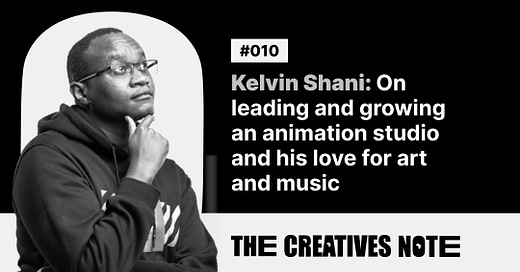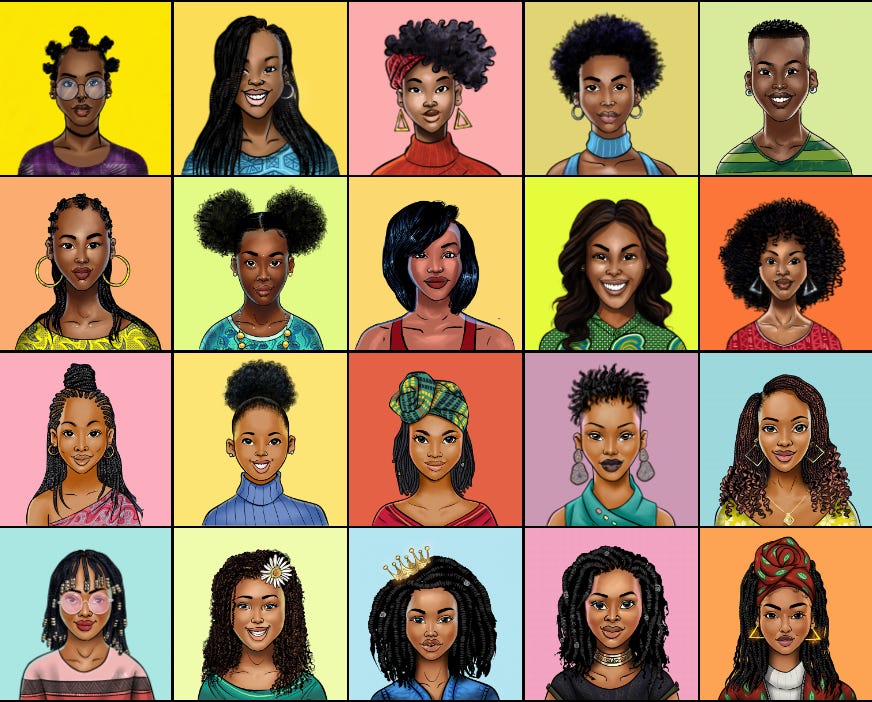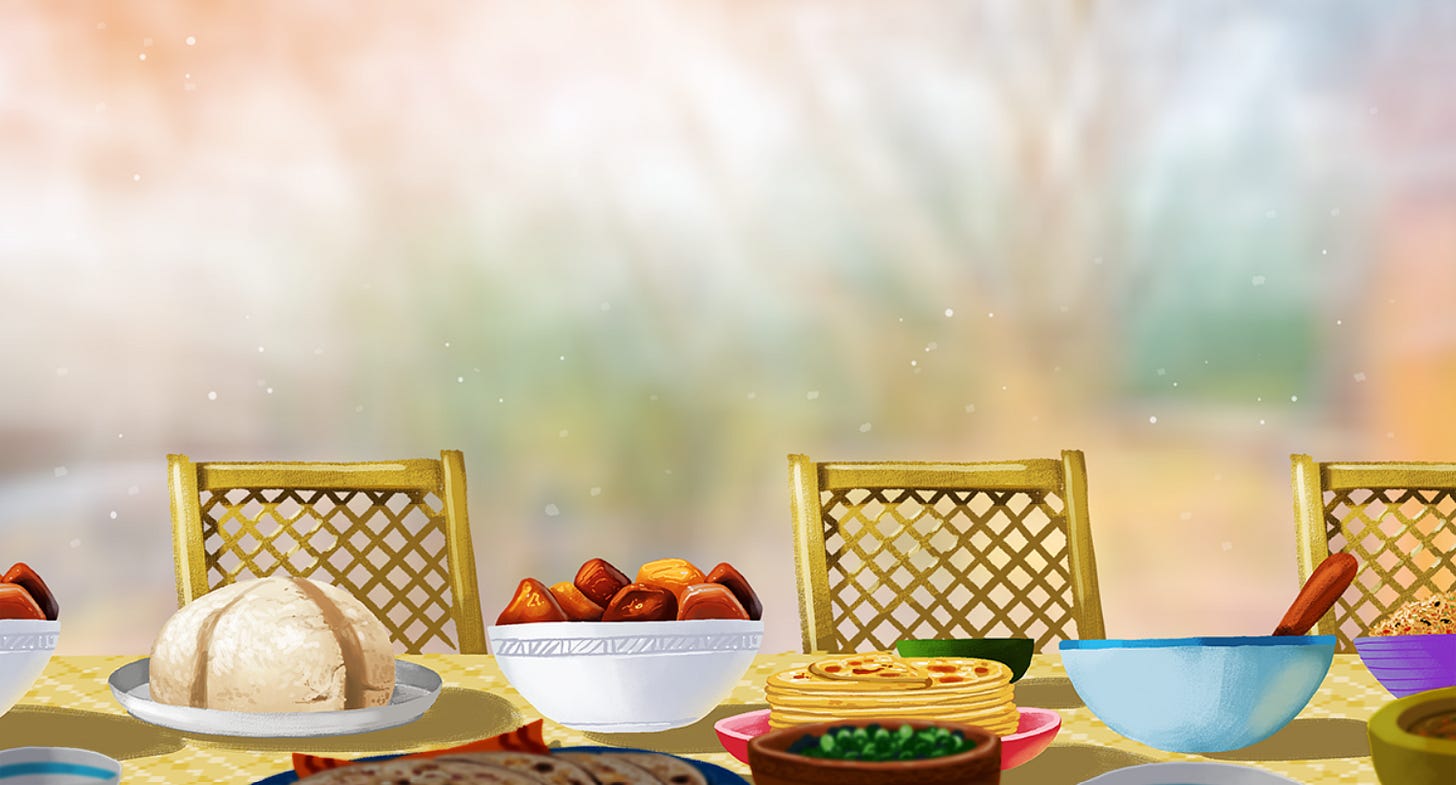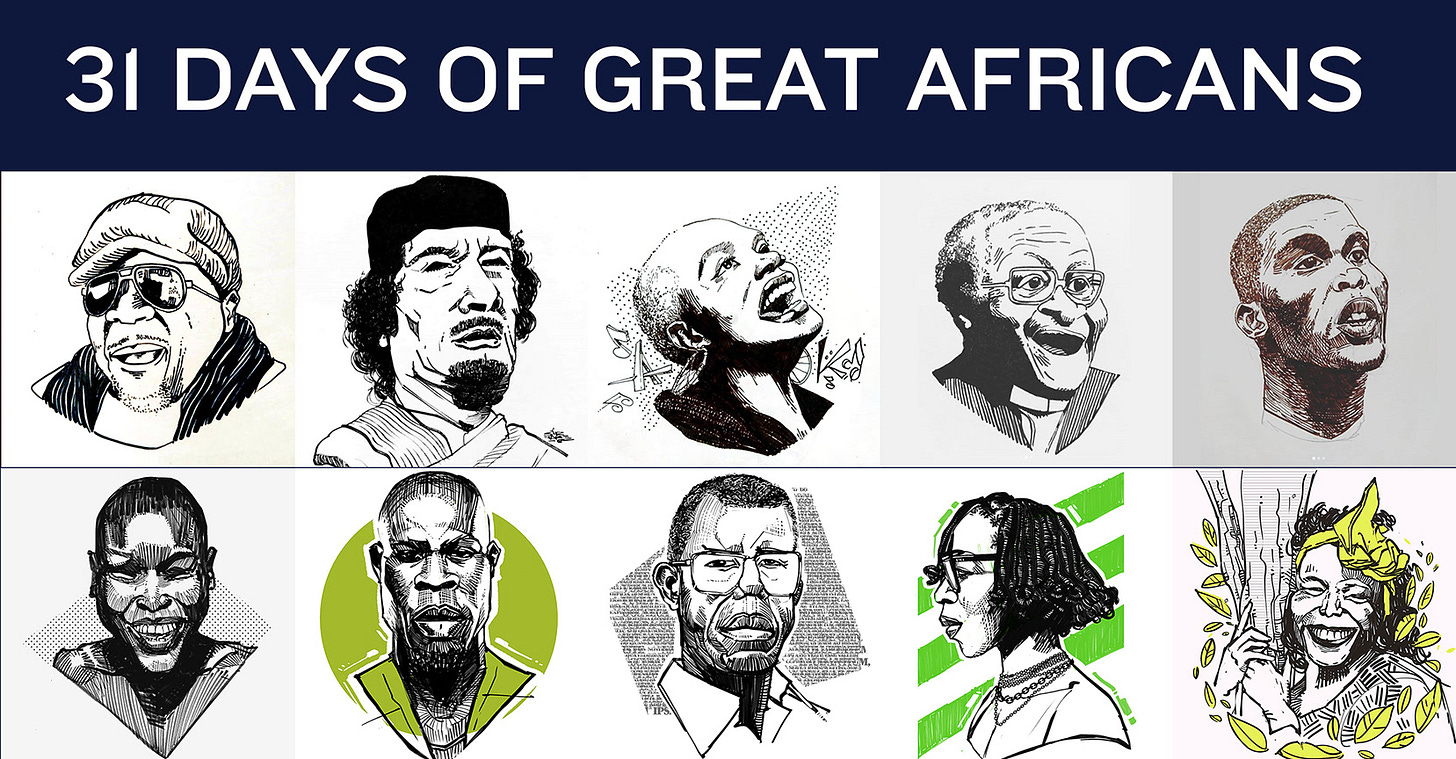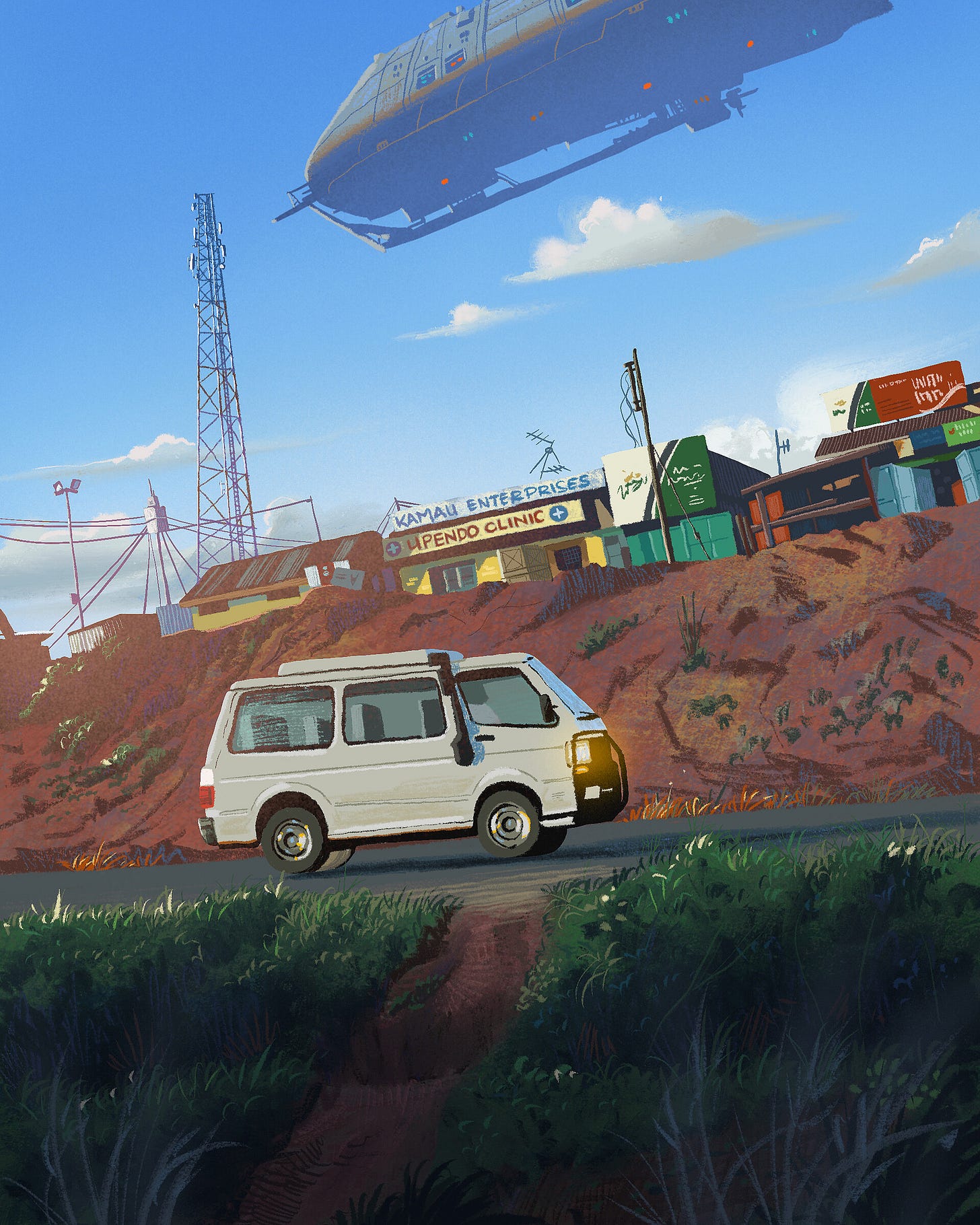Kelvin Shani: On leading and growing an animation studio and his love for art and music — #010
I am an illustrator and the founder of SirNare Animation Studios. I really love what I do so I am always excited to wake up in the morning to go to work.
Hi, thank you for joining us for another edition of our interview with African Creatives. In this edition, I spoke with Kelvin Shani, an illustrator and the founder of SirNare Animation Studios; an animation studio based in Nairobi-Kenya that provides animation, illustration, motion graphics, and visual effects services for a variety of clients such as NGOs, small and large businesses as well as individuals.
If you are curious to know what led him to illustration and animation, what drives the work he does, what it takes to lead and grow an animation studio, the challenges he faces leading an animation studio and how he navigates them, his favourite projects, the people that inspire him, and the people and brands he would love to work with, you should continue reading. You will definitely love and enjoy reading this!
Tell us about yourself
My name is Kelvin Shani. I am an illustrator and the founder of SirNare Animation Studios; an animation studio based in Nairobi-Kenya that provides animation, illustration, motion graphics, and visual effects services for a variety of clients such as NGOs, small and large businesses as well as individuals.
I have been an animator for 13 years and this is my seventh year running the studio. One interesting thing about me is that I really love what I do so I am always excited to wake up in the morning to go to work.
How did you get started with illustration and animation? What led you to design?
As a kid, I loved drawing and also loved watching cartoons so I always had it at the back of my mind to pursue this as a career. I wanted to be someone who created the cartoons I was watching and was curious to figure out how to do this. After finishing high school, I went to college (Shang Tao Media Arts College in Nairobi) to study 3D multimedia and design which was very new at the time. I got to intern at a graphic design company (Go Creations under tutelage from Benjamin Luta) to learn and practice graphic design. Afterwards, I joined an animation company called Tinga Tinga Animation Studio as a 2D animator and I got to learn how an animation studio operates. After this, I formed a company (Absolute Media Pictures - AMP) with my friends where we produced videos, advertisements, and animations. I would like to mention that I also learned a lot from YouTube and online platforms like Lynda.com.
How would you describe your experience and journey so far?
I had mentors like my animation teachers, Allan Mwaniki and Benjamin Waithaka as well as my former boss, Benjamin Luta who helped me with resources and gave me an opportunity to learn and practice.
How would you describe what you do to a 5-year-old?
I would say I draw ideas and make them move.
What is your day-to-day routine? What does a typical day look like for you?
I get to work by 9 a.m. and set out the tasks I need to do for the day, which could be emailing or responding to messages, generally overseeing the projects we're working on, or approving work that needs to be shared with clients so that I can get it done during the day.
I prefer to actively work and draw during the afternoon because I feel like it is a less distracting time. I close work at around 5 or 6 p.m. and go home. If I have energy, I work on my own personal projects, and if not, I cook and watch Netflix.
What is the structure of the studio and how does it operate?
We currently have a team of nine (9) people, seven (7) of whom work in the studio, and two (2) who work remotely. We have an administrator, a producer, an animator, two (2) illustrators, an editor doubling as an animator, a motion graphic designer, an accountant, a social media manager, and myself.
I like working on challenging projects that make me learn something new because I like the idea of learning. It makes every day exciting and makes me look forward to each day.
How do you get clients to work with you?
Initially, we used to work mostly based on referrals, that is, work with someone and do our best and hope they refer someone else to us or return for more projects. But the more the studio grew, the more I realized it was not sustainable. So now I am actively engaging in pushing our work and brand on social media to help connect with more people and clients. I am also pushing for more collaboration with other studios and creatives.
What do you enjoy most about what you do?
I really enjoy the fact that it is not set in stone in terms of what one can do. I can decide to use one approach for one project and another approach and medium of execution for another project.
Another thing I enjoy is the process of going from an idea in one’s head to a piece of work on paper or on the screen. I find this process very exciting.
What is the best career investment you have made as a creative?
Deciding to work with other people instead of working as a one-man team. It opened up time and opportunities for me to explore. Hiring someone who is good at what they do really helped me grow both the company and personally.
What are some of the challenges you face leading and managing your studio?
The biggest challenge is the fluctuation of the economy and currency. This has affected the availability of projects because, as a studio, we rely on commissions, which are mostly advertising projects. If there is no money in the economy, people won't buy, which means less revenue for companies and ultimately lesser budgets for companies to hire us. As for NGOs, less money in the economy means less funding for them, which translates to a smaller budget that affects how much they can spend on things like animations, which in turn affects us. So generally, it is the lack of a constant flow of work.
How do you navigate this challenge?
I put more effort into marketing and look out for avenues and opportunities for the studio. Learning and trying out different ways of doing things like upselling clients on our offerings is another strategy.
I also strive to build good relationships with the banks and creditors to ensure that we are not in a bad place.
How do you manage to do the business development work while doing actual design and animation work?
It takes a lot of delegation and trusting the person with the task. Also, constant and clear communication is very important.
Periodically, I do short and long courses on the business side of things to acquire new knowledge, sharpen my skills, and equip myself.
What do you look out for in talents/people you work with?
The major things I look out for are their attitude toward work, how they take feedback and their hunger—how much they want to do. I would pick these attributes ahead of their skills because skills can be learned. This is not to say skill is not important.
I also look out for their skill level and what they can bring to the table. Lastly, I consider how much it will cost to work with or hire them.
Take us through your process and workflow. How do you go from the brief to the final output?
Our process is very collaborative with the client. When they come to us, we have a brief session to get to know what they want and get ideas from them. We try to get as much information as we can in order to understand their vision. After this, we come up with schedules and project costs, ensure that we get approval, and sign the contract with the clients.
For the animation production, we start with the storyboard and the sketch for each scene. Then work on the character designs, developing them based on the brief shared by the client. This is a fun part of the process. We then proceed to work on the environment and background design.
The next step is to combine the characters and backgrounds and share them with the client to get feedback from them. After getting feedback and approval from the client, we get to work animating the characters based on the script and the actions we want them to carry out. We usually do a first cut—a rough cut with not so many details—that is then shared with the client for feedback and iteration until we are good to go.
Lastly, we render and work on sound design to get our final, digitally shareable output.
What part of this process do you enjoy the most?
The background and environment design part is the one I enjoy the most.
What are the essential gadgets, tools, and software you use for work daily?
I use the Graphic Tablet and iPad for painting and drawing.
For software, I use Adobe Photoshop, Clip Studio Paint, Adobe Illustrator, and Procreate for drawing, while I use Maya and Cinema 4D for 3D animation and Moho for 2D animation. For motion graphics, I use Cinema 4D and Adobe After Effects.
How did the Covid-19 pandemic and lockdown impact you and your work?
It was bittersweet. The bitter part was having to shut down the office. I had to think of ways to pivot the studio to become sustainable, and it made me realize that the advertising industry is very volatile. So I decided to focus on NGOs and also do illustrations for comic books and animations for other animation studios. We relaunched in December 2020 and have continued since then.
The best part is that it made the world smaller and removed borders, allowing people all over the world to work across different continents. So it opened up opportunities for collaboration and participation in events.
How do you handle creative blocks and client pushbacks?
Involving the client every step of the way really helps with client pushback.
As for creative blocks, I take a break and step away from the computer. I always come back with fresh eyes. Sometimes it has to do with figuring out if it is the software that is not working for what I want to achieve or if it is the direction that is not working. Once I figure this out, I can find solutions.
Asking for help from peers and colleagues is also important.
What is the task you don't enjoy doing but you have to do?
It has to be networking because I am naturally introverted. This is not good for business because I have to sell the services we offer to people, so I need to connect with people.
What are the most exciting projects you have worked on?
I really enjoyed working on the Super Morio album artwork. They are an international music group. It was a fun one and they gave me creative freedom.
I also enjoyed the 31 days of 31 Caricatures of African heroes I worked on. It was a fun one.
I worked on a personal portfolio piece, imagining what an airship would look like if it flew over Nairobi. I called the piece Prydwen in Kinoo.
I enjoyed our collaboration with Brand 2D to develop an animation for EXE to be shared online during the Easter season. The idea was to use caricatured versions of social media influencers to help promote the message.
The Taji Girl App Avatar design is another favourite of mine. I was commissioned to create African-themed avatars for the Taji Girl app.
What keeps you motivated to keep creating? What drives you?
I love and enjoy listening to music. It inspires me and constantly reminds me to keep pushing and trying.
My team also helps me and keeps me motivated to push myself and want to work and do my best.
What do you do for fun? How do you relax when you are not working?
I watch and binge Netflix's limited series. I also listen to audiobooks while sketching; I find it very meditative.
I cycle too. It helps me experience the world in a new way.
Who are the creatives that inspire you?
I am inspired by the works of Pascal Campion, Goro Fujita, and Alex Ross.
I am also inspired by Kim Jung Ji of blessed memory.
Who are the people you would love to work with or collaborate with?
I love the connection between art and music. I would love to work with Osborne Macharia, Karun, and Burna Boy.
What brand(s) would you love to work with?
Superani, Sony Pictures Animation, and Ubisoft
What would you be doing if you were not a designer?
Traveling. It is why I work hard. I want to be able to afford to travel.
What advice do you have for someone who is just starting out or is at the early stage of their creative journey?
The 10,000-hour philosophy is quite true. You just have to practice and work hard on your craft. The more I interact with international artists and brands, the more I realize that no one owes you anything. They look at you on the same scale and skill level as any other person in the world. It is up to you to decide what you have to do to attain the level you want in your career.
Be your own competition, that is, strive to be better than who you were yesterday because it will be easier that way to experience constant growth. Competing with someone else would mean you would leave the path you have been on for a long time, and if the other person stops, you will also stop, leading to confusion and being stuck.
Lastly, instead of working for money, work for something you love because money always comes when you do great work.
What would you consider success and fulfilment in your career when you look back in the next 20 years?
I would say having a chain of mentees who have gone on to mentor others. Also, having worked on projects in the gaming and movie industries.
Whose story would you love to read about?
Salim Busuru, Andrew Kaggia, Mike Muthiga, Emmanuel Oyo, and Muriithi Nyaga.
Do you have anything you would like to plug in or promote?
My animation studio; SirNare Animation Studio.
SirNare Limited is a creative studio based in Nairobi, Kenya, launched in October 2015. It has a team of young, experienced, and immensely qualified individuals. The team is driven to set trends in the animation industry through the delivery of innovative, professional, and high-quality content. They specialize in 2D & 3D animation, motion graphics, and illustration. SirNare Limited offers exceptional service with a keen eye for the production of client-focused content of unmatched quality.
Check us out on Instagram, Facebook, Twitter, and Youtube, or check out our Website.
Thank you for sharing with us!!!
Connect with Kelvin on Twitter, Instagram, and LinkedIn.
Thank you for reading and don’t forget to like and share the interview.
I know you enjoyed this, you should consider subscribing.
See you next time!!!
Follow us on Twitter, Instagram, and LinkedIn to stay up to date.


